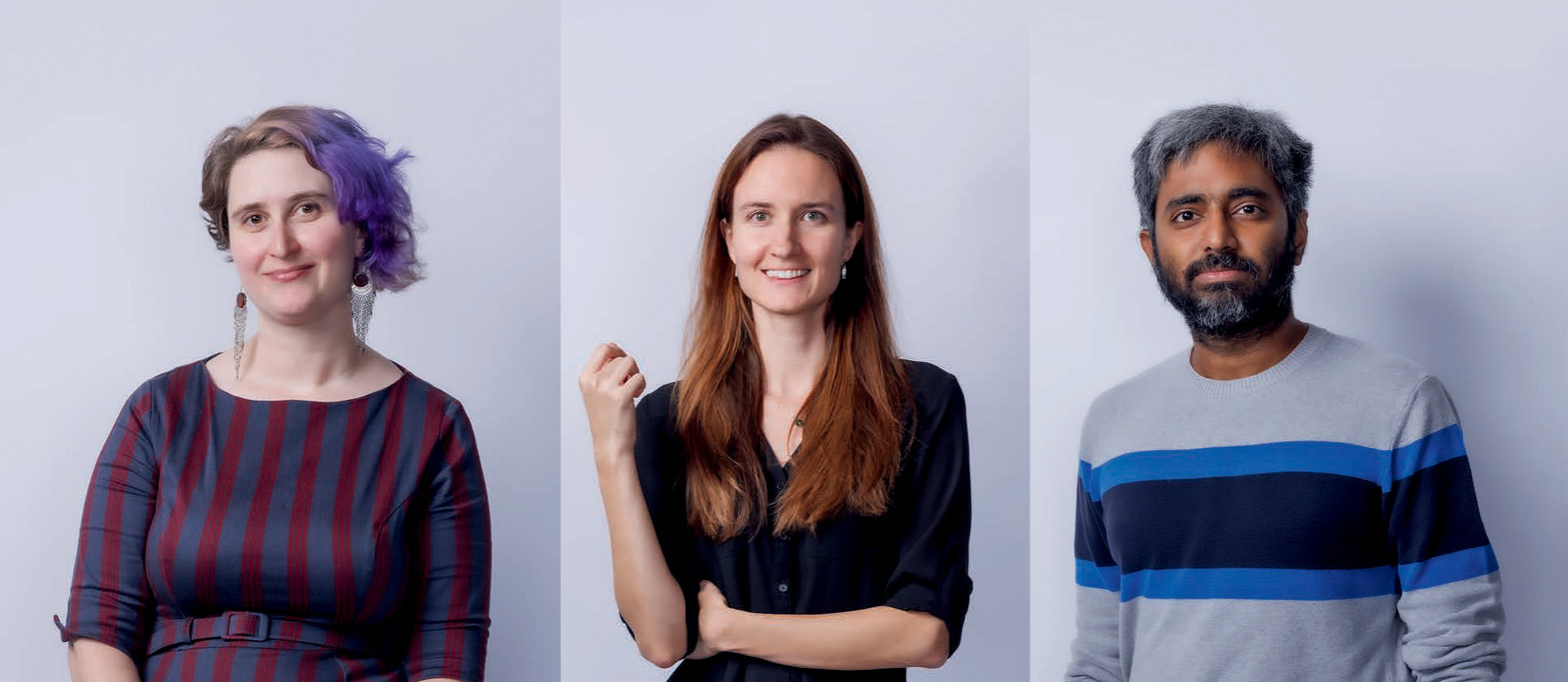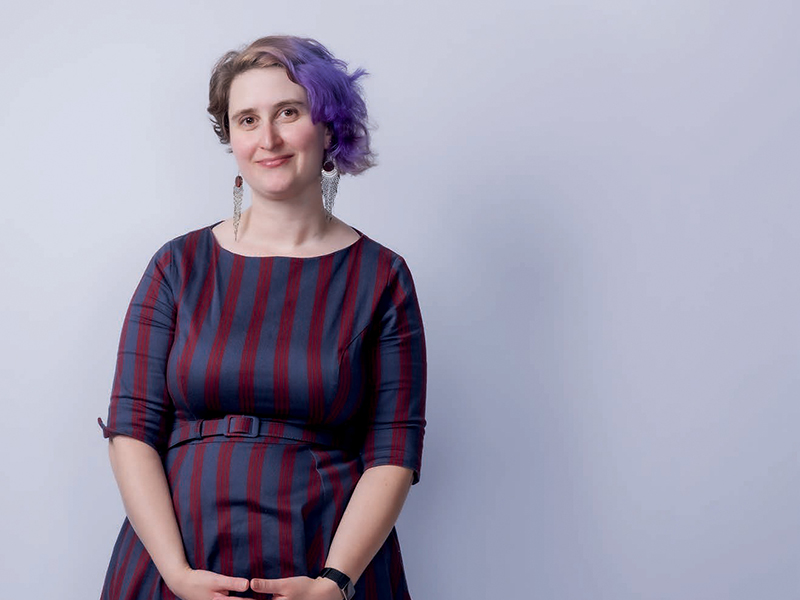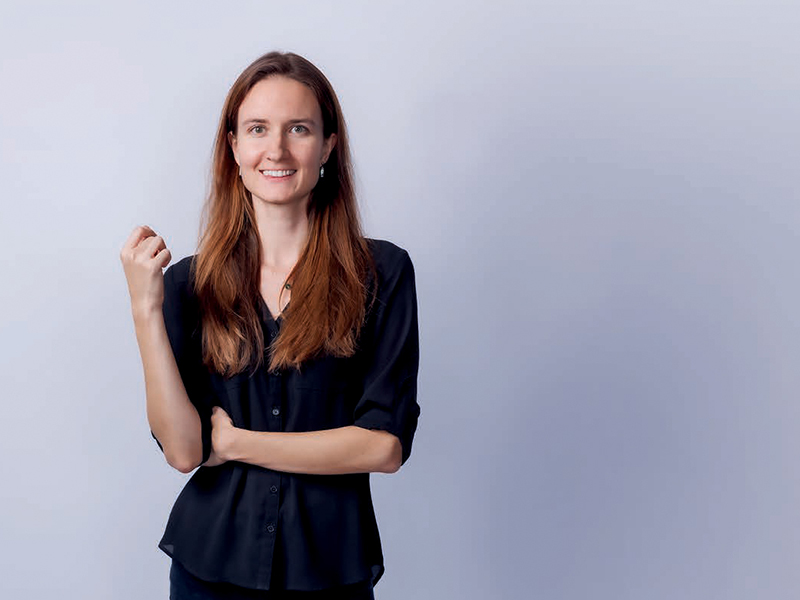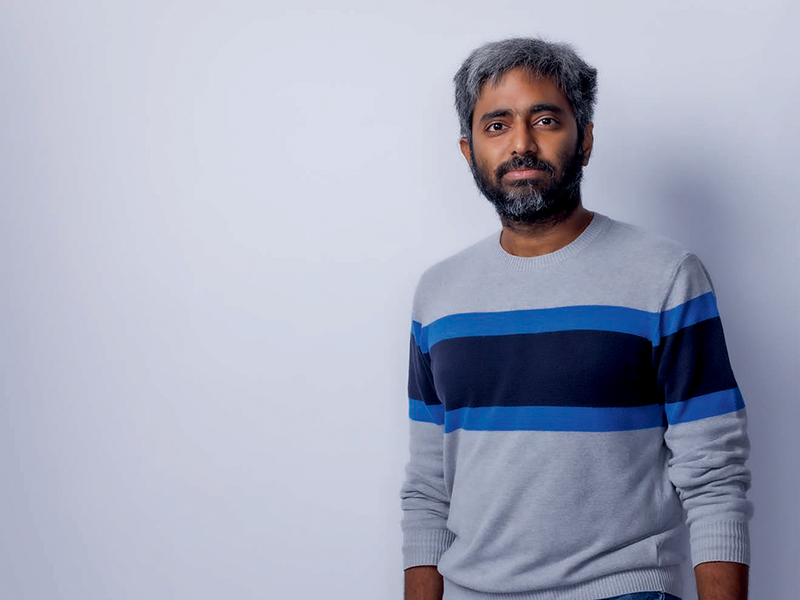
Next-Gen Innovators
Penn Engineering Postdoctoral Fellows Lead the Way on Groundbreaking Research
Postdoctoral fellows are an integral part of the success of any top-tier research university. While they are considered trainees who benefit from a full-time research experience and mentor- ship from investigators who are often at the forefront of their fields, they are also essential contributors to new research that advances their institution and positively impacts the world.
“In a word, postdocs make it possible for us to define the leading edge of science and engineering,” says David Meaney, Solomon R. Pollack Professor in Bioengineering and Senior Associate Dean of Penn Engineering. “They are the future leaders in groundbreaking research.”
Personalized Focus
Postdoctoral work is often the next step and the foundational element for future career scientists and faculty who have earned their doctoral degrees. At two or three years in length, the postdoc experience provides additional opportunities to be mentored by and collaborate with highly experienced principal investigators and to publish independent and collaborative research in a seminal area of interest.
“After five or six years in a Ph.D. program, postdocs come to us for their education capstone, an opportunity to personalize their education, learn their strengths and forward their research ideas,” Meaney explains. This can involve a widening of their research focus, drilling down on a specific interest from their doctoral experience, or both.

Lara Martin
Ph.D. in Human-Centered Computing from the Georgia Institute of Technology
Research Focus: Human-centered artificial intelligence, automated story generation and speech processing
That’s the route Lara Martin took when she came to Penn Engineering after earning a Computing Innovation Fellowship from the Computing Research Association. “I reached out to Chris Callison-Burch because one of his students was working on automated story generation, a subfield of AI that teaches computers how to tell stories. That’s what I focused on during my Ph.D.,” she says.
Working in the lab of Callison-Burch, Associate Professor in Computer and Information Science, has helped Martin broaden her research focus to pursue her passion for human-centered artificial intelligence with a focus on natural language.
“As I started my Ph.D., I wanted to work on a cool AI project that could have an interesting speech component, but even after five years, I never got around to adding speech to it as I had originally planned,” she explains. “That’s where I want to focus my research.”
Like most postdocs, Martin balances her lab time with other responsibilities. “I co-taught the Interactive Fiction and Text Generation class last spring, so lesson planning, class organization and teaching took up a good bit of time,” Martin says. “I have a lot of different projects going on simultaneously, so on any given day, I could also be programming, running models, conducting interviews with participants, coding interviews or writing papers. I also have meetings where I mentor graduate and under- graduate students who are doing research projects with me.”
Creative Collaborations
“In science and engineering, it’s important for us to always push the boundaries. Postdocs help us achieve that,” Meaney shares. “The highest-risk ideas for research that you have as a faculty member are great for post- docs to explore. They grab your meaning and take off to create the rest of the story, making discoveries and building on a body of knowledge that facilitates education and learning.” These opportunities can help launch post- docs into meaningful careers in academia, government or public enterprises.

Julia (Kate) Brynildsen
Ph.D. in Neuroscience from the University of Pennsylvania Perelman School of Medicine
Research Focus: Developing predictive models to understand how the brain transitions between states associated with health and disease
Julia (Kate) Brynildsen sought a postdoc position that would expose her to advanced network science approaches as she investigates how the brain responds to stimuli in health and disease states. She applied for a position with Dani S. Bassett, J. Peter Skirkanich Professor in the Departments of Bioengineering and Electrical and Systems Engineering.
“I think it can be easy to focus on our limitations in science. Dani is always looking toward possibilities and creative solutions to problems, which inspires me,” Brynildsen says. “They are constantly providing me with opportunities that are tailored to my specific interests and goals, whether by introducing me to a collaborator who shares my interests, involving me in a project that will expand my training in a particular direction, or notifying me about an opportunity to present my research.”
Brynildsen’s long-term goal is to obtain a tenure-track faculty position at a research-intensive institution, and she feels her experience at Penn Engineering is preparing her for success in that next step.
“The outstanding training I am receiving in cutting-edge approaches in network science, plus the opportunities to lead collaborative projects and network with scientists in and outside of the School, are building my confidence and my marketable skills,” she adds.
Exploring New Frontiers
Penn Engineering postdocs arrive at the University from all around the world. Currently, more than 150 post- docs from 21 countries play a vital role in research and teaching in the School. Perhaps one of the greatest benefits these postdocs receive in choosing Penn Engineering is the opportunity to join a global network of scientists and creative thinkers that can be an invaluable asset throughout their careers.
“These talented scientists go on to leadership roles in academia and industry, representing the University and Penn Engineering in exceptional ways,” Meaney says. “While they are here, they contribute greatly to the multi-intellectual fabric of our university and inspire future scientists. Science is better as a melting pot, and the School is better because of our postdocs.”
Aayush Kant
Ph.D. in Mechanical Engineering from the Indian Institute of Technology, Mumbai
Research Focus: Biophysical characterization of cellular and nuclear behavior and the long-term mechanochemical impact of traumatic brain injuries

“I was looking for a program where I would be able to combine my computational skills with the skills of people working on experimental models,” says Aayush Kant, a postdoc working with Vivek Shenoy, Eduardo D. Glandt President’s Distinguished Professor in Materials Science and Engineering. “Exposure to literature early in my Ph.D. convinced me that collaborations are key to good research in my area. Penn offers many centers for multidisciplinary research, with leaders of their respective areas working together to create a highly collaborative environment.”
Kant’s research focuses on biophysical characterization of cellular and nuclear behavior and the long term mechanochemical impact of traumatic brain injuries. Working with Shenoy has provided Kant with opportunities to approach biological problems as an engineer.
“Vivek’s background in electrical engineering and physics plus the collaborative opportunities in his lab have introduced me to innovative experimental and imaging techniques that are a great fit and have helped to elevate my research in biophysics,” he says.
At the University, Penn Engineering postdocs benefit greatly from the access to researchers in different fields and top flight resources. “Postdocs here are free to explore interdisciplinary collaborations within the School and across Penn,” says Meaney. “In addition, they can connect with our centers and institutes that are by design at the front lines of science and technology research.”
For Penn Engineering, postdoc success brings a tremendous sense of pride to faculty and students. “We want to see our postdocs shine while they are with us,” Meaney says. “But we are especially proud when they go out into the world to make it a better place. We know that more than a little bit of Penn Engineering goes with them.”
Text by Amy Biemiller / Photos by Colin Lenton
